RAINOS - The watering robot
The fully automated robot
for watering graves
Advantages at a glance
Drives and waters completely autonomously
Up to 14 hours in any terrain
Goodbye shortage of skilled labour
RAINOS pours up to 20,000 litres per day individually at night
Fast & autonomous filling
Robot fills water (215 litres) autonomously at the Innok filling stations in under 1 minute
Safe operation / proven technology
In continuous operation for 3 years, simple commissioning, high-performance safety scanner, remote maintenance
RAINOS is worth it
Rapid amortisation, low costs per month or one-off payment, development of new business areas without additional personnel requirements ("Pour-as-a-Service")
Sustainability
Fully electric vehicle
No local CO₂ emissions
No petrol costs
RAINOS-XL-Power battery and refuelling station battery can be charged via solar panel
Optimised irrigation
Saves water (more precise water delivery compared to manual watering)
Low water loss due to reduced transpiration (when watering at night)
Frees up staff capacity
Gentle on plants and employees
Safe operation
Watering at night, i.e. usually no public traffic
High-performance 3D scanner
Automatic STOP in the event of obstacles
Robot is insured with machinery
Piety
No disturbing noises in the cemetery.
Watering takes place at night, visitors during the day are not disturbed.
No machines, no hoses, no noise, disturbing mourning visitors - especially during funerals.
Plannability
Reduces workload for gardeners in midsummer.
Regardless of the illness or holidays, all graves are watered on schedule.
Defined amount of water per watering point
New business areas without additional costs (e.g. "watering as a service")
Irrigation of external graves,
new target customers
Seasonal / holiday irrigation possible
Irrigation of communal green spaces
SMART CITY approaches of cities & municipalities
RAINOS video gallery - Features and customer testimonials
You can find a selection of current product videos and customer testimonials here. For specific use cases and customer solutions, visit our Use Cases.
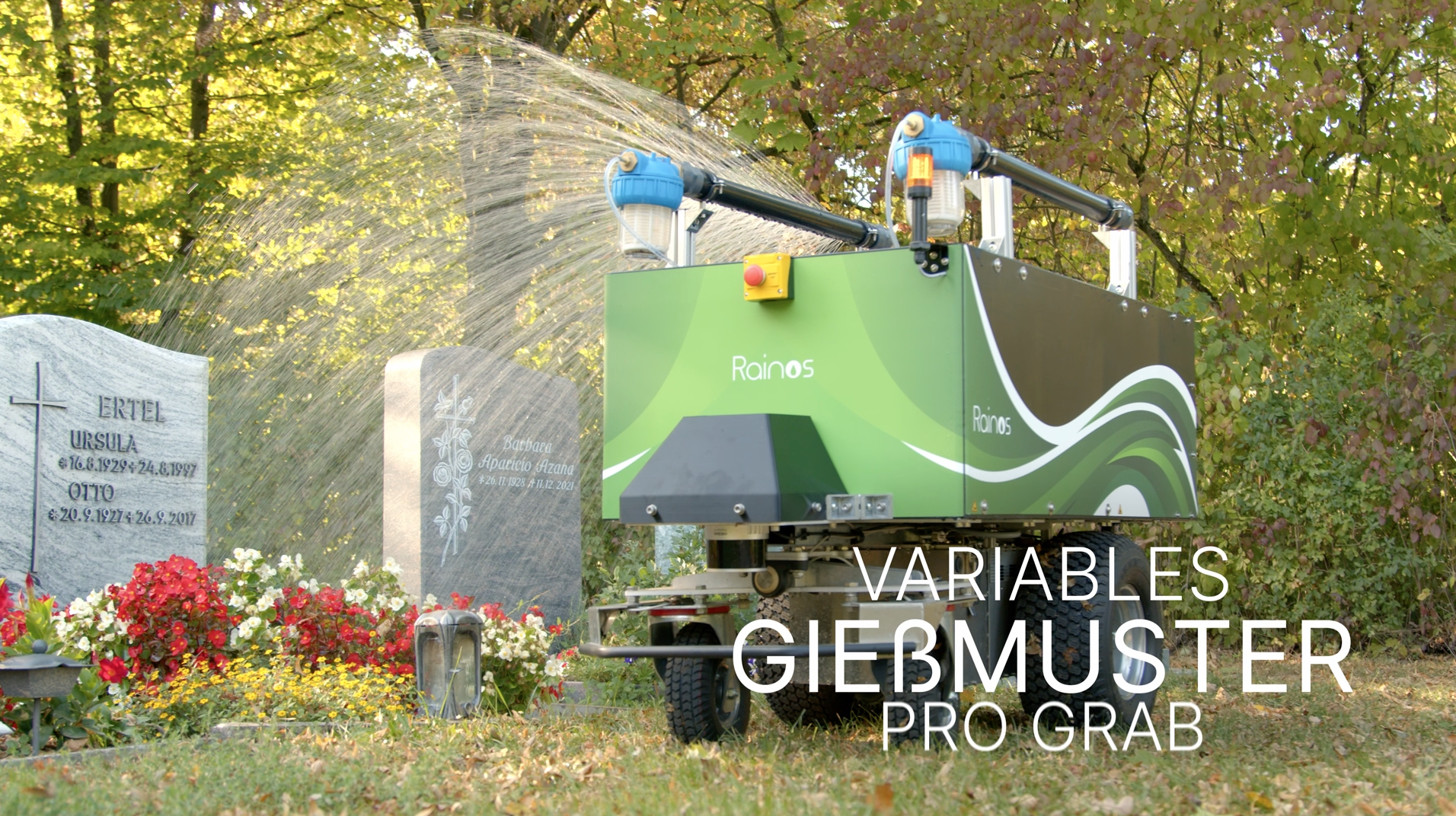
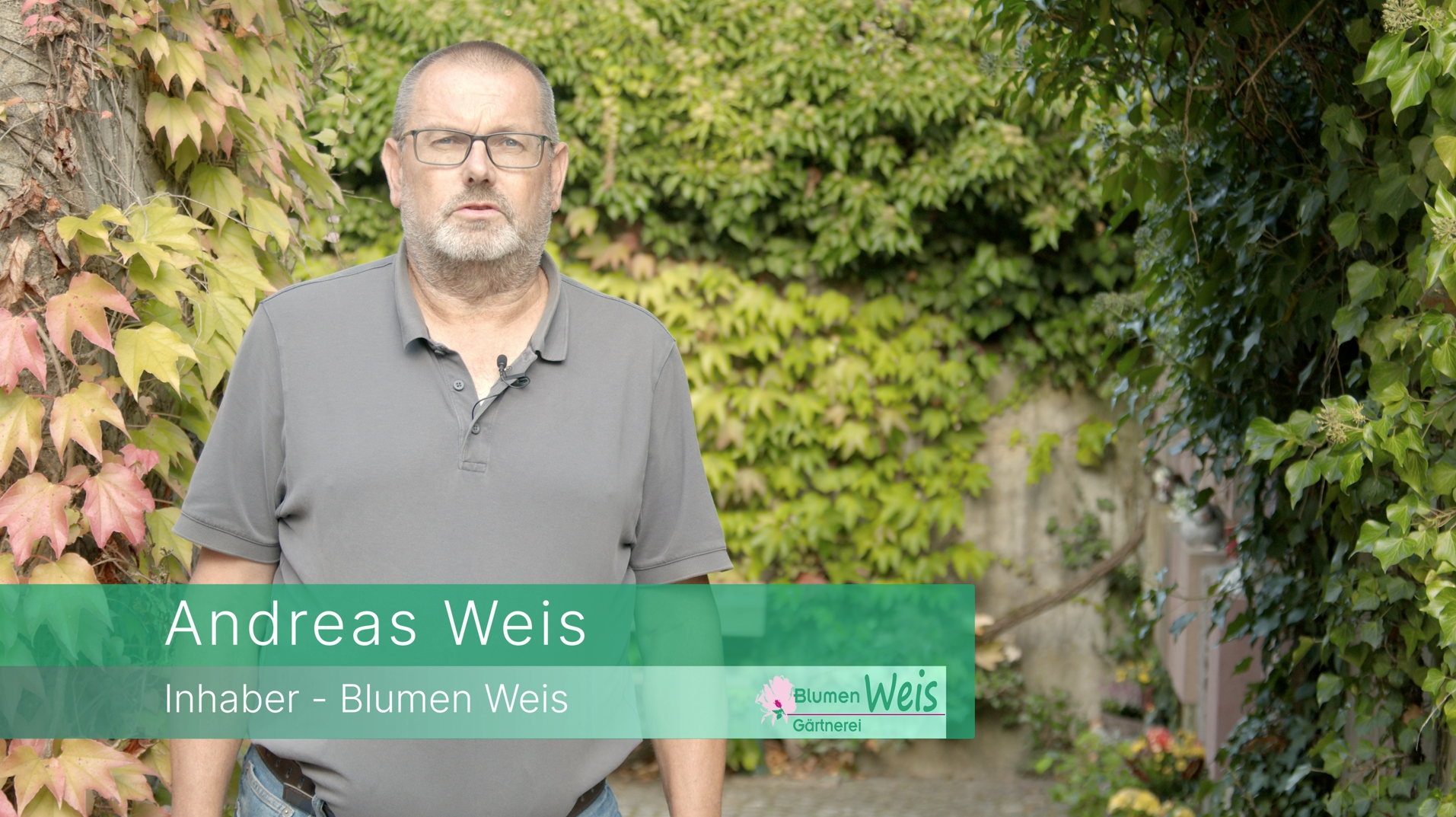
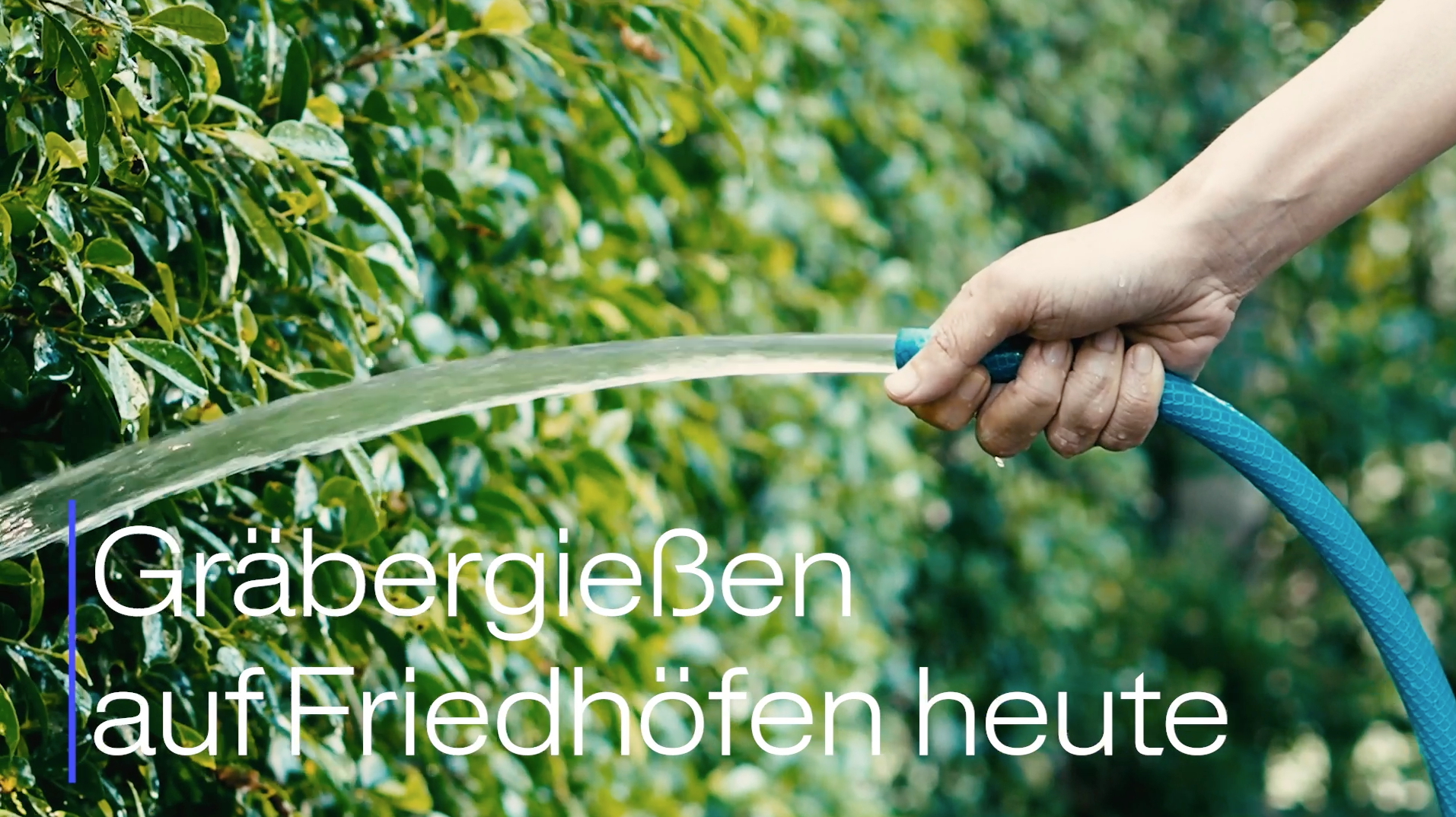
WITH Rainos
-
Rainos waters the specified graves independently
-
Pours up to 20,000 litres per night
-
Rainos travels autonomously from grave to grave
-
Water quantity and watering time can be set separately for each grave
-
No more labour required for watering
-
Flexible and suitable for off-road use
-
Simple operation
-
Highest safety standards (personal protection!)
WITHOUT Rainos
-
Manual watering is time-consuming and labour-intensive
-
Permanently installed irrigation systems are not possible in cemeteries
-
Increasing shortage of skilled labour in the green sector
-
Growing expenditure on irrigation as climate change leads to more periods of heat
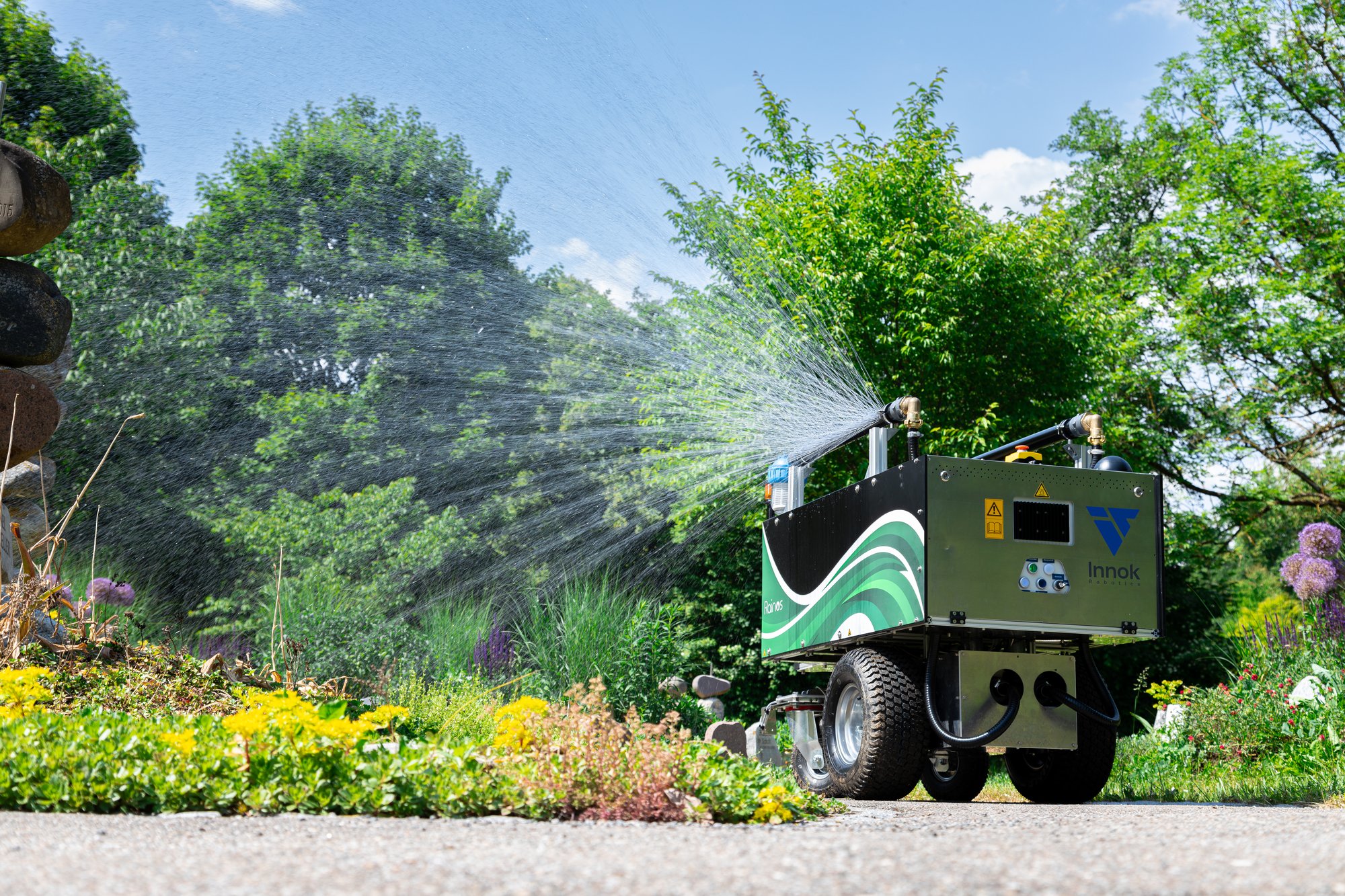
Drives and waters completely autonomously
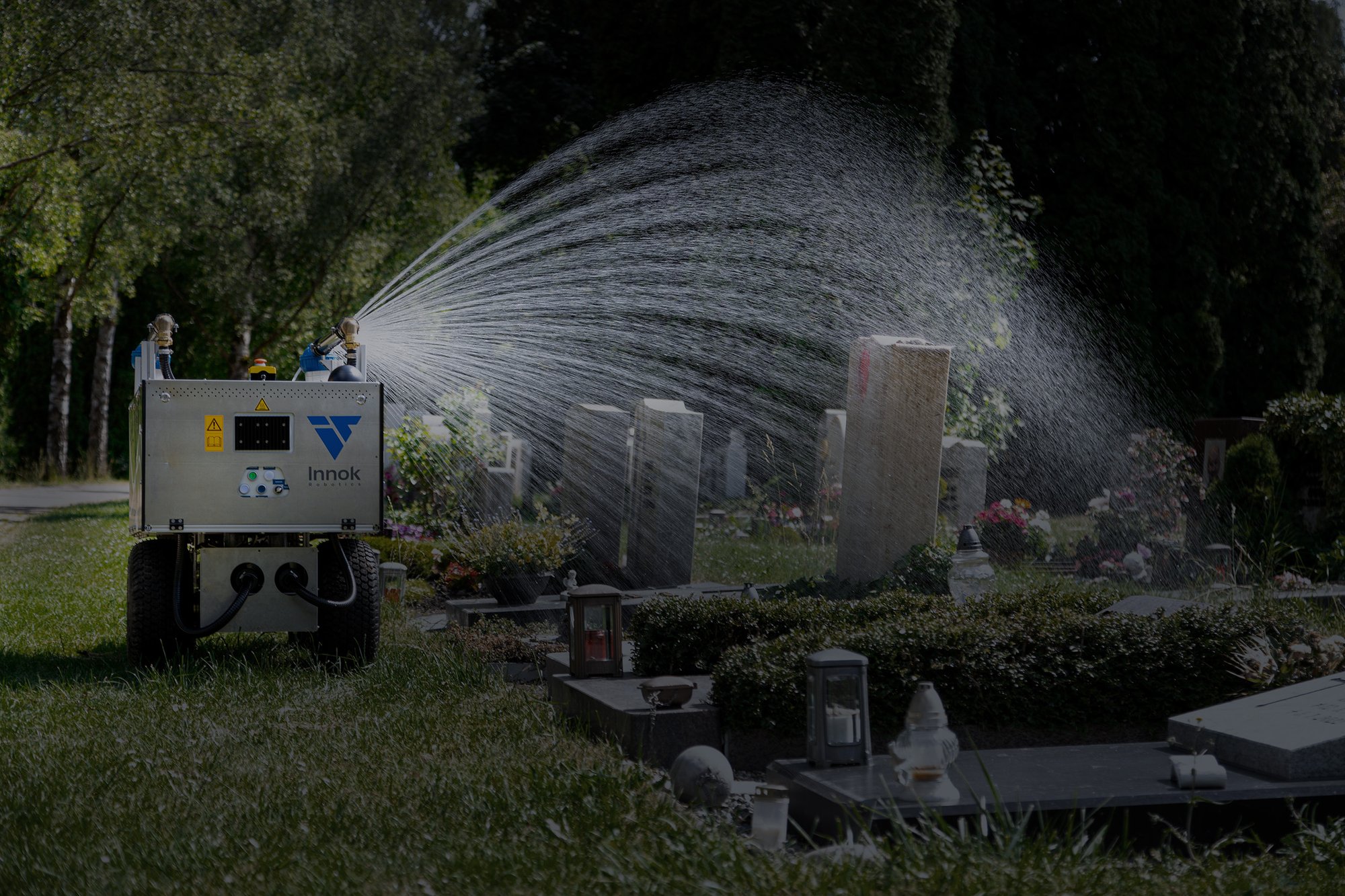
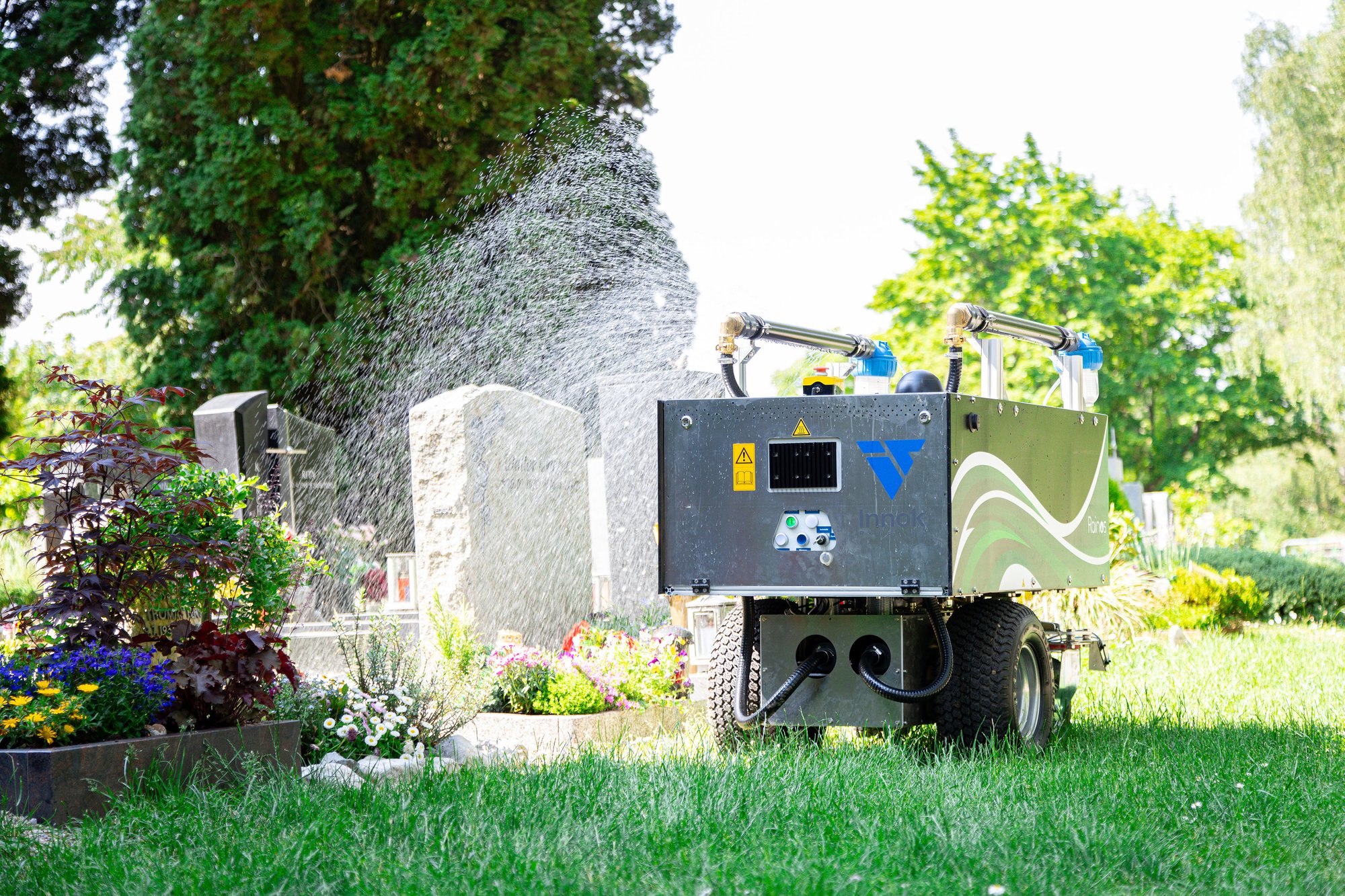
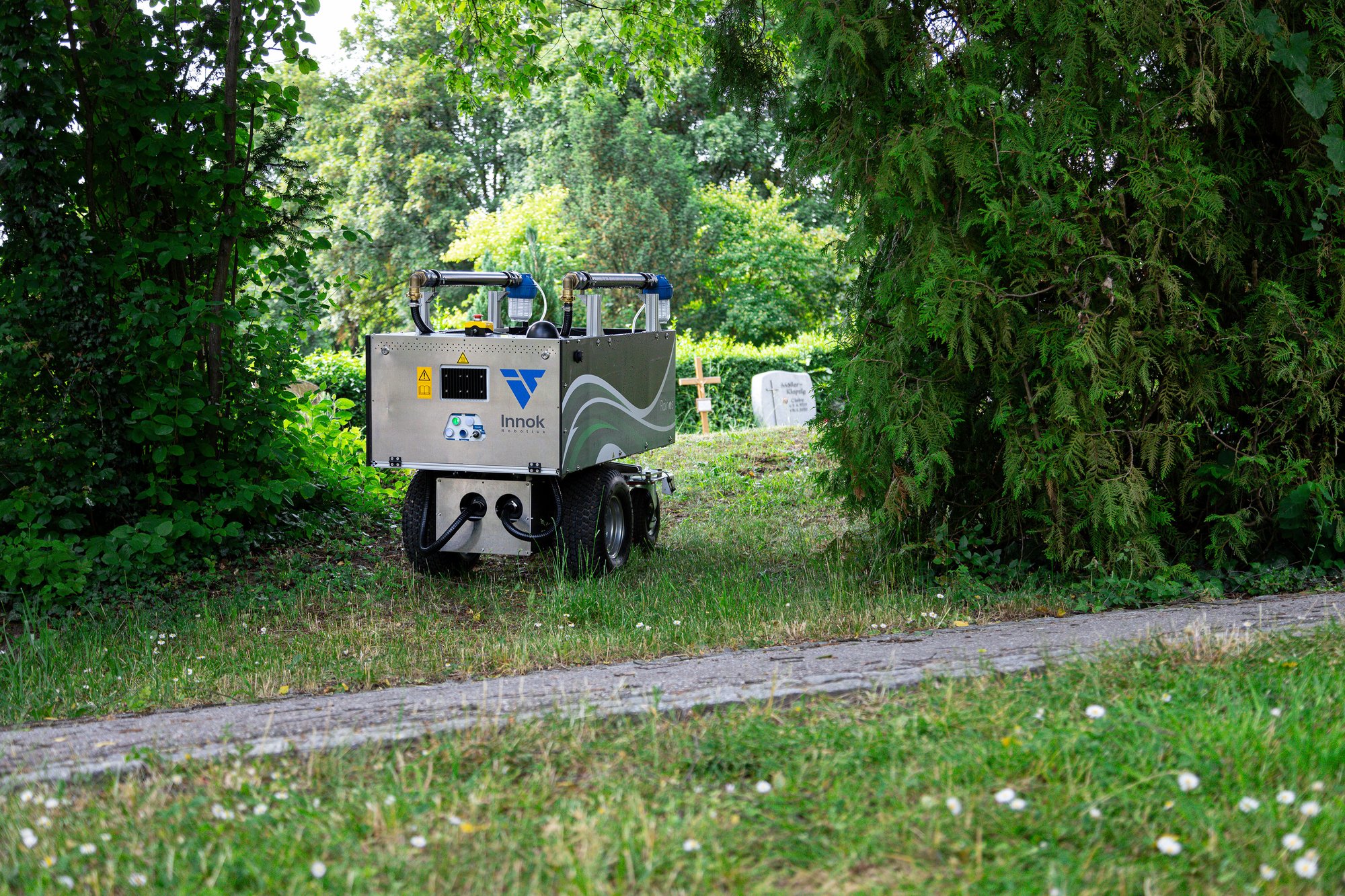
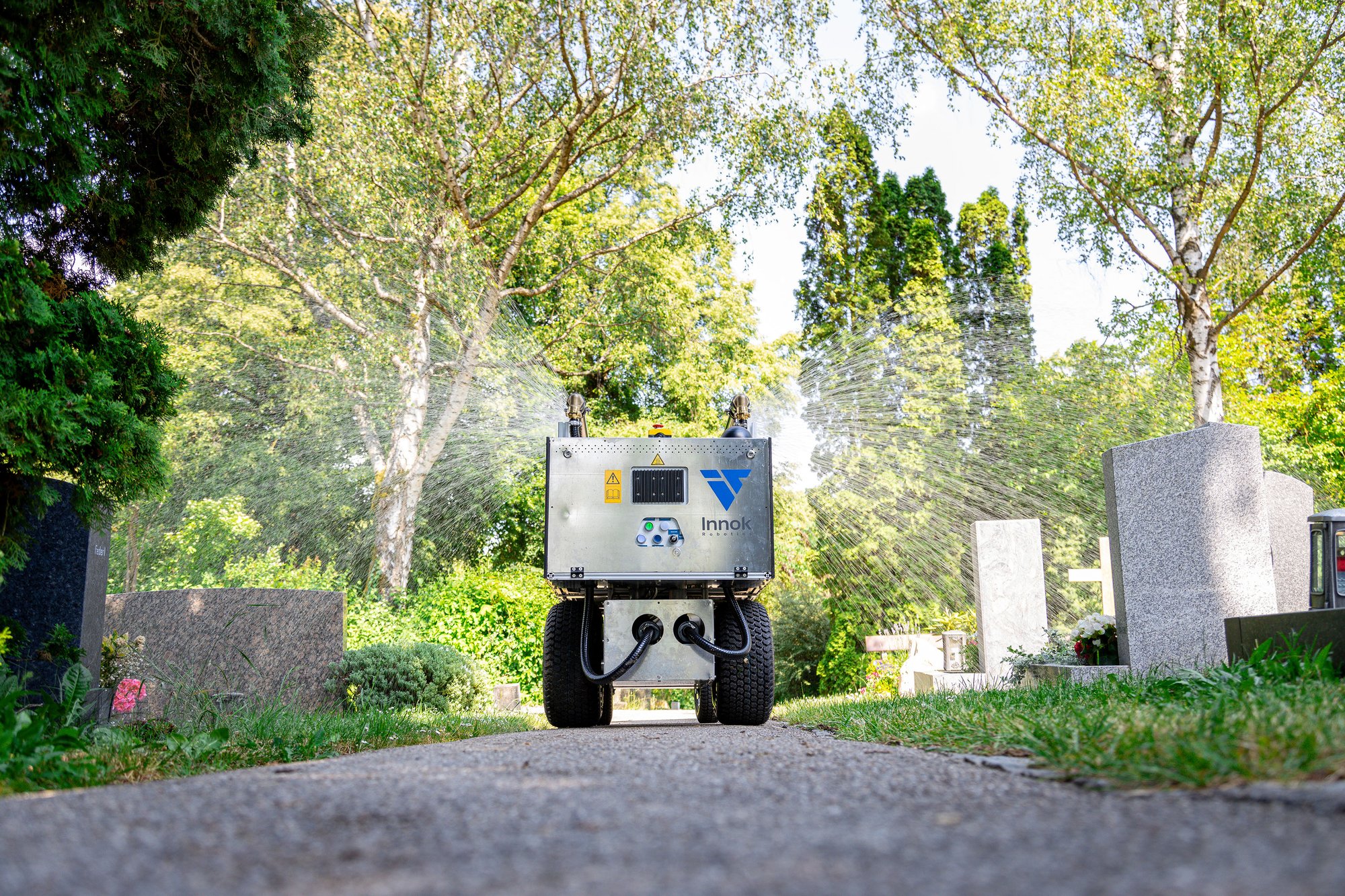
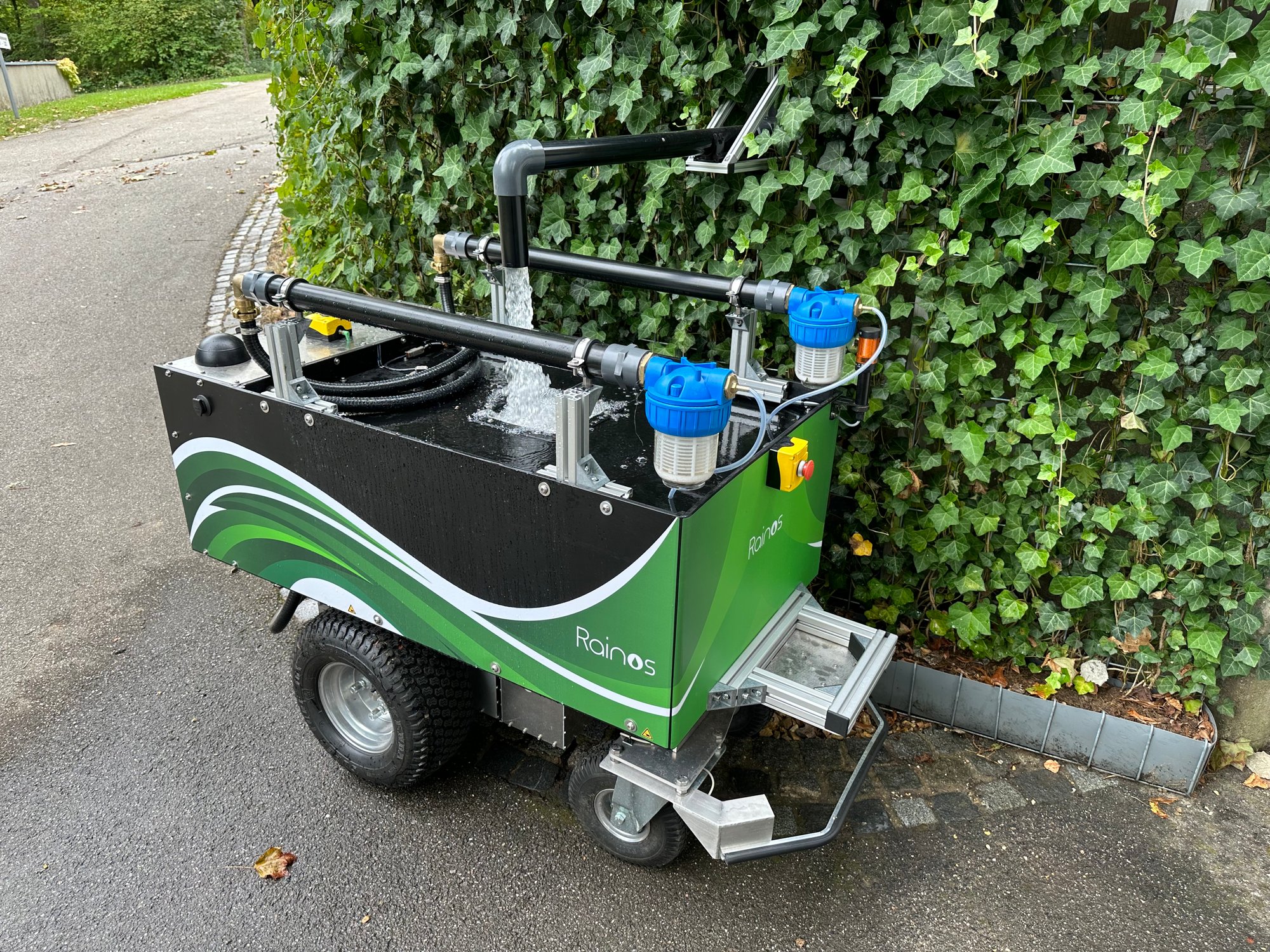
Some of our RAINOS customers







"We are entrusted with the care of many graves at the Schwabach cemetery. Watering the graves sufficiently by hand became an ever greater challenge - and not just in hot summers. Watering hundreds of graves with a watering can was no longer manageable in terms of manpower. It was literally draining our strength.
We are particularly impressed by how well Rainos copes with the different - sometimes very difficult - surfaces at the Schwabach cemetery."
Heino Schwarz
Managing Director of Blumen Schwarz, Schwabach
Technical data
Dimensions: 125 x 70 x 110 cm
Weight: 165 kg
Tank capacity: 215 l (robot) 300 l (refuelling station)
Refuelling station: GEKA connection, fully automatic refuelling in under 1 minute, solar power supply
Track width: 57 cm
Ground clearance: 10 cm
Maximum speed: 3.1 km/h or 0.9 m/s
Ambient temperature: -10 °C to +45 °C
Charging time: 2 hours (20 to 80 %)
Battery life: up to 16 hours
Battery: 2900 Wh, 48 V, up to 4.0 kW
Drive wheels: Ø 41 cm, turf profile (gentle on grass)
Motor: 800 W, gear ratio: 1:100, optional 1:50
Localisation: Lidar
Protection class: IP65
Radio networks: WLAN or LTE
Now automate watering with the RAINOS:
FAQ
-
How does the installation work?
- Step 1: Mapping the environment using a terrestrial, high-resolution 3D scanner
Step 2: Creation of a 2D navigation map
Step 3: Setting up the location - Creating ("learning") the main routes together with the customer
- Setting up the refuelling and charging stations
- Creation of the first 30 casting locations together with the customer
- Definition of the casting patterns together with the customer
- Test runs together with the customer
- Step 1: Mapping the environment using a terrestrial, high-resolution 3D scanner
-
How does the charging process work?
- Innok uses lithium-ion batteries so that the RAINOS can be in operation for up to 14 hours (depending on payload and route)
- The RAINOS is charged by cable or autonomously via an inductive charging station (advantage: no personnel required)
- Charging time: approx. 4-6 hours -
Which languages can be selected for the Innok Cockpit?
- The Innok Cockpit is currently available in the following languages:
- English
- German
- Innok Cockpit is browser-based and can therefore also be translated into other languages using the browser's automatic translation function. We cannot guarantee the correctness of the translation in this case. -
Does the RAINOS recognise people and objects?
- In short: the Rainos recognises every movement at a height of just 20 cm. - -
- Even the nimblest feet don't escape the scanner! Safety first! The robot reduces its speed as soon as an obstacle even approaches or comes from the side.
- Automatic stop in the event of an obstacle (INDUROS example video)
A built-in high-precision laser scanner with a visibility range of at least 20 m and a viewing angle of -15° to +15° - Automatic deceleration when obstacles are detected
- Bypasses are not programmed as standard and are not recommended for safety reasons
- Permanent obstacle must be bypassed by remote control (or a bypass route is defined in the user interface).
-
How does the refuelling process work?
- The robot refills the tank with water autonomously
- Refilling process: max. 1 minute
- Capacity of the tank station container: 300 litres
- Installation requirements: Water connection & foundation (or comparable)
- Advantage: No power connection required, as a solar panel with lithium battery is used for the control and the water is refilled via the line pressure
-
How many refuelling stations are needed?
- Recommendation: one refuelling station per hectare (100m x 100m)
- Depending on various factors such as grave density and water connections
- Advantage of several refuelling stations: shorter distances for refuelling. Even more graves can be watered.
-
What maintenance work needs to be carried out?
- The RAINOS is low-maintenance
- Depending on operation, the water filter, scanner surfaces, spout openings and tyre pressure must be checked.
- Minimal time required
-
What happens in the event of theft?
- An activated RAINOS can be roughly located at any time via the mobile phone cell in which it is located.
- In addition, autonomous operation at another location is not possible without a stored map.
- Theft is also difficult due to the weight and size of the robot.
-
Can the RAINOS also be used during the day?
- Can the RAINOS also be used during the day? It is also possible to use the RAINOS during the day
- Prerequisite: additional scanner, defined rules at the cemetery, customised programming
- Our recommendation: RAINOS is best used at night
- Advantages at night:
- Lower degree of evaporation. Water savings of 20-30% possible.
- Reverent watering; no people are disturbed
- Protection of plants and existing crops
Better water absorption of the soil
-
How do set-up and service work in remote locations and/or locations far away from Innok?
- Our technicians arrive on site, use a special scanner to create an initial map, which is then completed with ToDo points.
- Having problems? Our support team will connect to the device and solve the problem.
- If problems cannot be solved in this way, one of our technicians will visit you.
- Innok is also currently building up a comprehensive partner network in the DACH region. There will also be regional service points here in the future.
-
How does the authorisation process work? What do authorities and cemetery administrations think about robotics?
- The cemetery administration is the first point of contact for authorisation
- As a rule, approval is an easy procedure and is granted informally at the cemetery's own discretion, as the advantages of well-maintained and optimally watered graves are also obvious to the relevant authorities and safety during operation is the top priority.
- Cemetery administrations are generally open to the new modern (and water-saving) technology.
- Authorisations have already been granted in Regensburg, Hamburg, Leipzig, Ludwigshafen, Pforzheim, Nuremberg and many other German cities and municipalities. The first robot is also in use in Switzerland.

